
 Jacques R. Pauwels
Jacques R. Pauwels
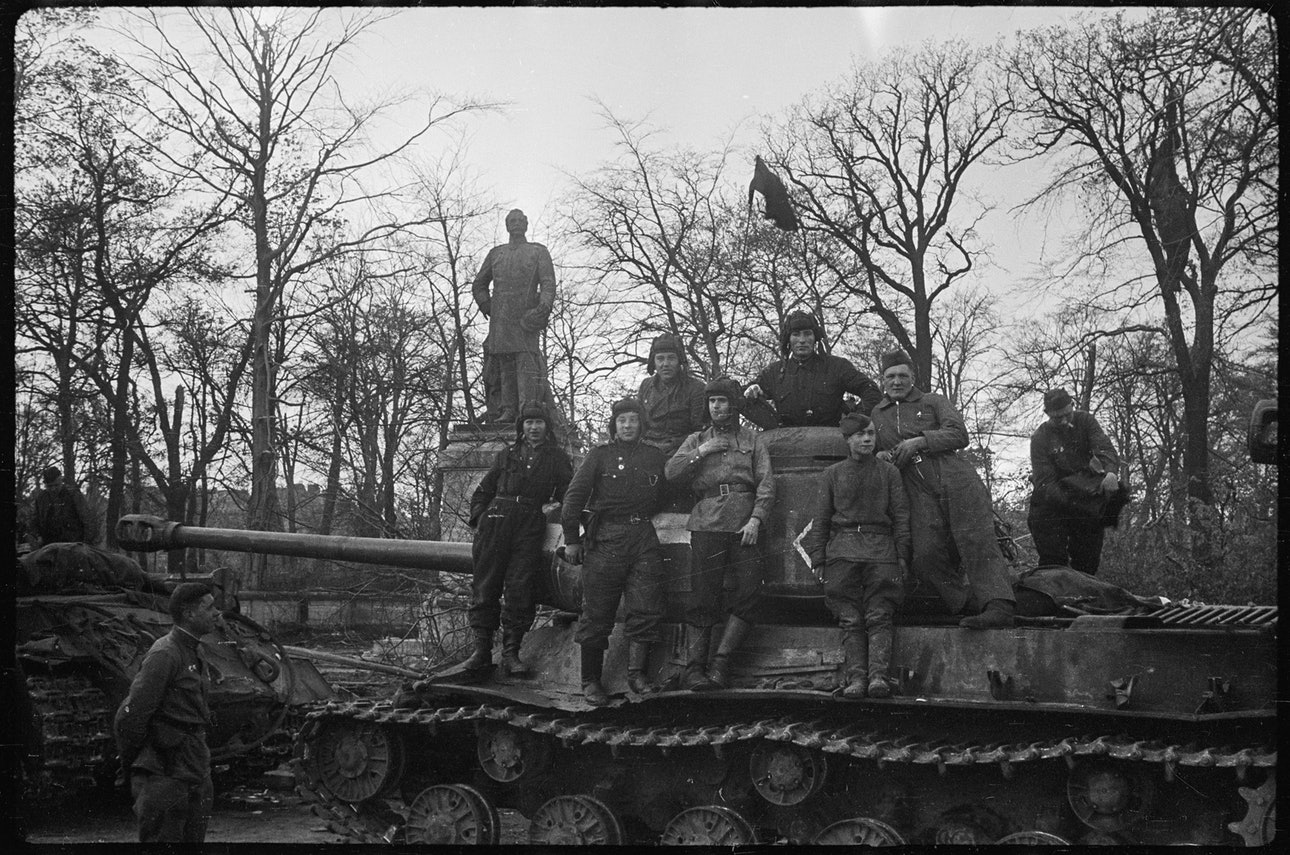
May, 1945. Russian "war tourists" in Berlin. "These were, indeed, the men of the armies which had fought and beaten two-thirds of Germany’s land forces on the Eastern Front while the magnificently equipped British and Americans had trouble enough dealing with the other third in Normandy, Italy, and along the Siegfried Line. They were stocky, hard-faced peasants and herdsmen from the Steppes. They looked inured to hardship,” Australian war correspondent Osmar White described the victors.
In 1943, the Americans, British, and Soviets had agreed that there would be no separate negotiations with Nazi Germany with respect to its capitulation, and that the German surrender would have to be unconditional. In the early spring of 1945, Germany was as good as defeated and the Allies were getting ready to collectively receive its unconditional submission. But where would that capitulation ceremony take place – on the Eastern Front, or on the Western Front?
If only for reasons of prestige, the Western Allies preferred that Nazi Germany would acknowledge defeat somewhere on the Western Front. Secret talks with the Germans, which the British and Americans were already holding at that time (i.e. in March 1945) in neutral Switzerland in flagrant violation of inter-allied agreements, under the code-name Operation Sunrise, promised to be useful in that context. They could produce a German surrender in Italy, which had been the original objective of the talks but could also yield an agreement with respect to the coming general and supposedly unconditional German capitulation. Intriguing details, such as the venue of the ceremony, might possibly be determined in advance and without input from the Soviets. There actually existed many possibilities in this respect, because the Germans themselves kept approaching the Americans and the British in the hope of concluding a separate armistice with the Western powers or, if that would prove impossible, of steering as many Wehrmacht units as possible into American or British captivity by means of “local” surrenders, i.e. surrenders of larger or smaller units of the German army in restricted areas of the front.
The Great War of 1914-1918 had ended with a clear and unequivocal armistice, namely in the form of an unconditional German surrender. The capitulation was signed in the headquarters of Marshal Foch in the village of Rethondes, near Compiègne, on November 11 shortly after 5 a.m., and the guns fell silent on that same morning at 11. The Second World War, on the other hand, was to grind to a halt, in Europe at least, amidst intrigue and confusion, so that even today there are many misconceptions regarding the time and place of the German capitulation. The Second World War was to end in the European theatre not with one, but with an entire string of German capitulations, with a veritable orgy of surrenders, and even after the signings it sometimes took quite some time before the hostilities were terminated.
It started in Italy on April 29, 1945, with the capitulation of the combined German armies in southwestern Europe to the Allied forces led by Alexander, the British field marshal. The ceremony took place in the town of Caserta, near Naples. Signatories on the German side included SS General Karl Wolff, who had conducted the negotiations with American secret agents in Switzerland about sensitive issues such as the neutralization of the kind of Italian anti-fascists for whom there was no room in the American-British post-war plans for their country. Stalin had found out about this “Operation Sunrise” and expressed misgivings about the arrangement that was being worked out between the Western Allies and the Germans in Italy, but in the end, he gave his blessing to this capitulation. The armistice was signed on April 29 but provided for a cease-fire only on May 2. This purported to allow sufficient time for American or British troops to hurry all the way to Trieste, where German troops were fighting off Tito’s Yugoslav partisans; the latter had good reason to believe that this city might become part of Yugoslavia after the war and undoubtedly had in mind the dictum that possession is ninety percent of the law. But the Americans and British wanted to prevent this scenario. A New Zealand unit reached Trieste “after a hectic dash up from Venice” on May 2 and helped to force the Germans in the city to surrender the next day, in the evening. A Kiwi chronicle of this event euphemistically relates that their men “arrived just in time to liberate the city together with units of Tito’s army,” but admitted that the objective had been to prevent the Yugoslav communists from seizing Trieste on their own and putting in place their own military administration, thus solidifying their claim to the region.
Many people in Great Britain firmly believe even today that the war against Germany ended with a German surrender in the headquarters of another British field marshal, namely Montgomery, on the Luneburg Heath in northern Germany. Yet this ceremony took place on May 4, 1945, that is, at least five days before the guns finally fell silent in Europe, and this capitulation applied only to German troops that had hitherto been battling Montgomery’s British Canadian 21st Army Group in the Netherlands and in Northwest Germany. Just to be on the safe side, the Canadians accepted the capitulation of all German troops in Holland the next day, May 5, during a ceremony in Wageningen, a town in the eastern Dutch province of Gelderland. To the British, it is of course important and gratifying to believe that the Germans had to beg for a cease-fire in the headquarters of their very own “Monty”; to the latter the prestige associated with the event provided some compensation for the fact that his reputation had suffered considerably from the fiasco of Operation Market Garden, the September 1944 attempt to cross the Rhine in the Dutch town of Arnhem, an undertaking of which he had been the godfather.
In the US and in Western Europe, the event on the Luneburg Heath is rightly viewed as a strictly local capitulation, even though it is recognized that it served as a kind of prelude to the definitive German capitulation and resulting ceasefire. As far as the Americans, French, Belgians, and others are concerned, this definitive German surrender took place in the headquarters of General Eisenhower, the supreme commander of all allied forces on the Western Front, in a modest school building in the city of Reims on May 7, 1945, in the early morning. But this armistice was to go into effect only on the next day, May 8, and only at 11:01 p.m. It is for this reason that even now, commemoration ceremonies in the United States and in Western Europe take place on May 8.
However, even the important event in Reims was not the final surrender ceremony. With the permission of Hitler’s successor, Admiral Dönitz, German spokesmen had come knocking on Eisenhower’s door to try once again to conclude an armistice only with the Western Allies or, failing that, to try to rescue more Wehrmacht units from the clutches of the Soviets by means of local surrenders on the Western Front. Eisenhower was personally unwilling to consent to further local surrenders, let alone a general German capitulation to the Western Allies only. But he appreciated the potential advantages that would accrue to the Western side if somehow the bulk of the Wehrmacht would end up in British-American rather than Soviet captivity. And he also realized that this was a unique opportunity to induce the desperate Germans to sign in his headquarters the general and unconditional capitulation in the form of a document that would conform to inter-Allied agreements; this detail would obviously do much to enhance the prestige of the United States.
In Reims, it thus came to a byzantine scenario. First, from Paris an obscure Soviet liaison officer, Major General Ivan Susloparov, was brought over to save the appearance of the required Allied collegiality. Second, while it was made clear to the Germans that there could be no question of a separate capitulation on the Western Front, a concession was made to them in the form of an agreement that the armistice would only go into effect after a delay of forty-five hours. This was done to accommodate the new German leaders’ desire to give as many Wehrmacht units as possible a last chance to surrender to the Americans or the British. This interval gave the Germans the opportunity to transfer troops from the East, where heavy fighting continued unabatedly, to the West, where after the signing rituals in Luneburg and then Reims hardly any shots were being fired anymore. The Germans, whose delegation was headed by General Jodl, signed the capitulation document at Eisenhower’s headquarters on May 7 at 2:41 a.m.; but the guns were to fall silent only on May 8 at 11:01 p.m. Local American commanders would cease to allow fleeing Germans to escape behind their lines only after the German capitulation went into effect. It can be argued, then, that the deal concluded in the Champagne city did not constitute a totally unconditional capitulation.
The document signed in Reims gave the Americans precisely what they wanted, namely, the prestige of a general German surrender on the Western Front in Eisenhower’s headquarters. The Germans also achieved the best they could hope for, since their dream of a capitulation to the Western Allies alone appeared to be out of the question: a “postponement of execution,” so to speak, of almost two days. During this time, the fighting continued virtually only on the Eastern Front, and countless German soldiers took advantage of this opportunity to disappear behind the British-American lines. However, the text of the surrender in Reims did not conform entirely to the wording of a general German capitulation agreed upon previously by the Americans and the British as well as the Soviets. It was also questionable whether the representative of the USSR, Susloparov, was really qualified to co-sign the document. Furthermore, it is understandable that the Soviets were far from pleased that the Germans were afforded the possibility to continue to battle the Red Army for almost two more days while on the Western Front the fighting had virtually come to an end. The impression was thus created that what had been signed in Reims was in fact a German surrender on the Western Front only, an arrangement that violated the inter-Allied agreements. To clear the air, it was decided to organize an ultimate capitulation ceremony, so that the German surrender in Reims retroactively revealed itself as a sort of prelude to the final surrender and/or as a purely military surrender, even though the Americans and the Western Europeans would continue to commemorate it as the true end to the war in Europe.
It was in Berlin, in the headquarters of Marshal Zhukov, that the final and general, political as well as military, German capitulation was signed on May 8, 1945, or put differently, that the German capitulation of the day before in Reims was properly ratified by all the Allies. The signatories for Germany, acting on the instructions of Admiral Dönitz, were the generals Keitel, von Friedeburg (who had also been present in Reims) and Stumpf. Since Zhukov had a lower military rank than Eisenhower, the latter had a perfect excuse for not attending the ceremony in the rubble of the German capital. He sent his rather low-profile British deputy, Marshal Tedder, to sign, and this of course took some luster away from the ceremony in Berlin in favour of the one in Reims.
As far as the Soviets and the majority of Eastern Europeans were concerned, the Second World War in Europe ended with the ceremony in Berlin on May 8, 1945, which resulted in the arms being laid down the next day, on May 9. For the Americans, and for most Western Europeans, “the real thing” was and remains the surrender in Reims, signed on May 7 and effective on May 8. While the former always commemorate the end of the war on May 9, the latter invariably do so on May 8. But the Dutch celebrate on May 5, date of the ceremony in the Canadian headquarters in Wageningen. That one of the greatest dramas of world history could have such a confusing and unworthy end in Europe was a consequence, as American historian Gabriel Kolko has writes, of the way in which the Americans and the British sought to achieve all sorts of big and small advantages for themselves – to the disadvantage of the Soviets – from the inevitable German capitulation.
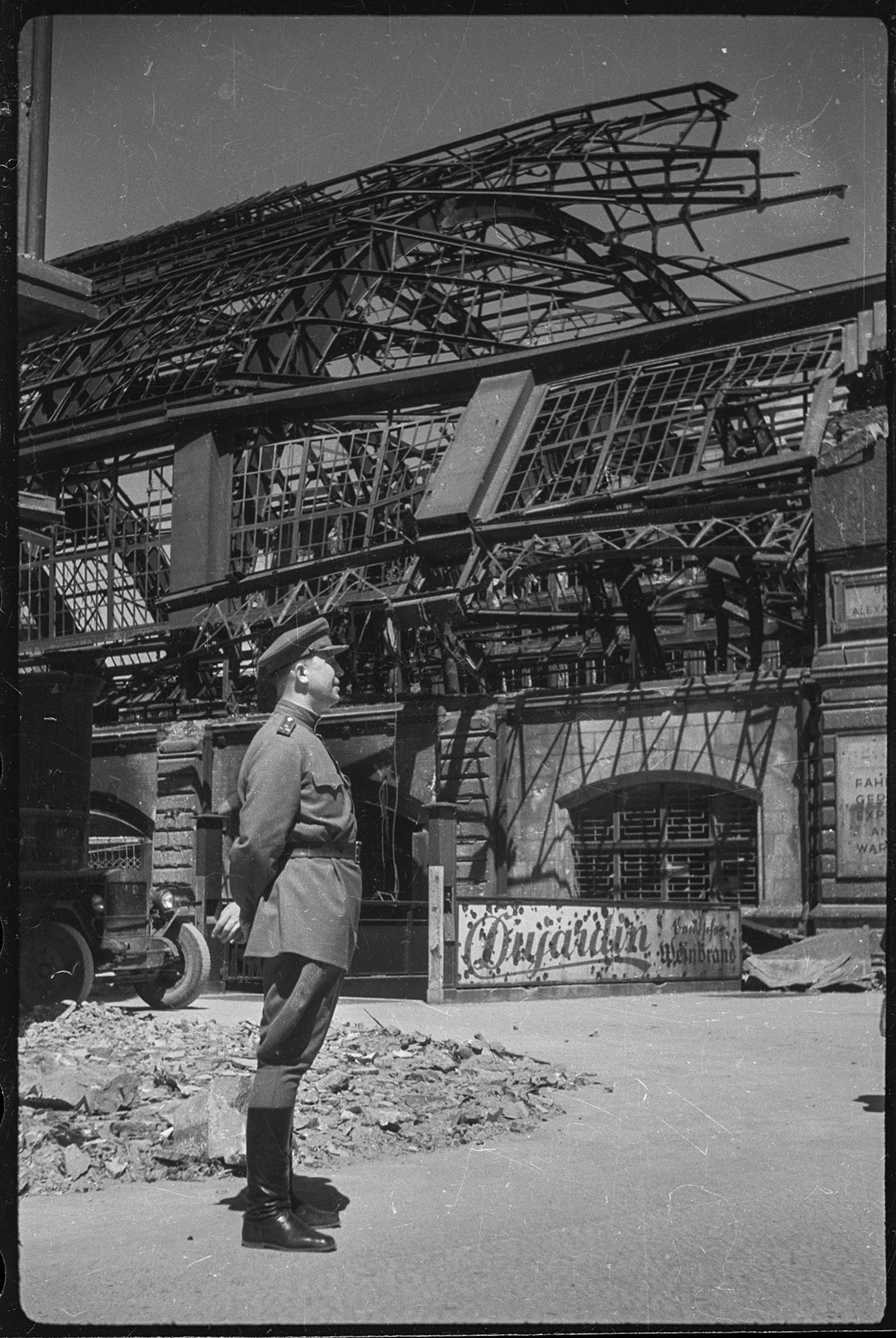 The First World War had ended de facto with the armistice of November 11, 1918, and de jure with the signing of the Treaty of Versailles on June 28, 1919. The Second World War came to an end with an entire string of surrenders, but it never did come to a peace treaty à la versaillaise, at least not with respect to Germany. (Peace treaties were in due course concluded with Japan, Italy, and so on.). On February 10, 1947, all the victorious powers thus officially reconciled themselves in Paris with the countries that had been allies of Nazi Germany, namely Italy, Romania, Bulgaria, and Finland. And a peace treaty with Japan was concluded by the US and almost fifty other countries – but not the Soviet Union and the People’s Republic of China – in San Francisco on September 8, 1951; that treaty went into effect on April 28 of that same year. The so-called State Treaty signed between the four great victors of World War II – the US, Britain, France, and the Soviet Union – in Vienna on May 15, recognizing Austria as an independent and neutral country, may also be considered to have been a peace treaty.
The First World War had ended de facto with the armistice of November 11, 1918, and de jure with the signing of the Treaty of Versailles on June 28, 1919. The Second World War came to an end with an entire string of surrenders, but it never did come to a peace treaty à la versaillaise, at least not with respect to Germany. (Peace treaties were in due course concluded with Japan, Italy, and so on.). On February 10, 1947, all the victorious powers thus officially reconciled themselves in Paris with the countries that had been allies of Nazi Germany, namely Italy, Romania, Bulgaria, and Finland. And a peace treaty with Japan was concluded by the US and almost fifty other countries – but not the Soviet Union and the People’s Republic of China – in San Francisco on September 8, 1951; that treaty went into effect on April 28 of that same year. The so-called State Treaty signed between the four great victors of World War II – the US, Britain, France, and the Soviet Union – in Vienna on May 15, recognizing Austria as an independent and neutral country, may also be considered to have been a peace treaty.
The reason why no real peace treaty was ever signed with Germany, is that the victors – the Western Allies on the one side and the Soviets on the other side – were unable to come to an agreement about Germany’s fate. Consequently, a few years after the war, two German states emerged, which virtually precluded the possibility of a peace treaty reflecting an agreement acceptable to all parties involved. And so a peace treaty with Germany, that is, a final settlement of all issues that remained unresolved after the war, such as the question of Germany’s eastern border, became feasible only when the reunification of the two Germanies became a realistic proposition, namely, after the fall of the Berlin Wall. That made the “Two-plus-Four” negotiations of the summer and fall of 1990 possible, negotiations whereby on the one hand the two German states found ways to reunify Germany, and whereby on the other hand the four great victors of the Second World War — the United States, Great Britain, France, and the Soviet Union — imposed their conditions on the German reunification and cleared up the status of the newly reunited country, taking into account not only their own interests but also the interests of other concerned European states such as Poland. The result of these negotiations was a convention that was signed in Moscow on September 12, 1990, and which, faute de mieux, can be viewed as the peace treaty that put an official end to the Second World War, at least with respect to Germany.
At that time, in 1990, the Soviets committed themselves to withdrawing their troops from all the Eastern European countries that had been their “satellites,” and they kept that promise; they also dissolved the Warsaw Pact. American troops, on the other hand, have remained in Germany ever since, and the US Congress has just recently officially decided that they will stay there for an indefinite period, even though most Germans would like to see the Yanks go home. The US also failed to respond to the dissolution of the Warsaw Pact with a dissolution of NATO. That alliance had presumably been created to defend Europe against a Soviet threat, and that threat had ceased to exist. Washington failed to keep a promise not to expand NATO to Russia’s borders as a wuid pro quo for the Red Army troops’ withdrawal; instead, Poland, the Baltic countries, the Czech Republic, etc., were enrolled as members of the alliance. As NATO clearly served offensive purposes, even in faraway countries such as Afghanistan, the alliance’s push into Europe’s eastern reaches looked increasingly threatening to the Russians.
It is not difficult to understand that Moscow viewed the planned incorporation of Ukraine into NATO to be unacceptable. This is how we got the present war in that country. Let us hope that this conflict, unlike World War II, will soon end with an unambiguous armistice and a solid peace treaty!
ABOUT THE AUTHOR
 Jacques R. Pauwels is a people's historian. In the tradition pioneered by Marx and Engels, and continued by Michael Parenti, Howard Zinn, Eric Hobsbawm, Leo Huberman, and others of similar merit, he writes history that is not only firmly grounded in truth but is aimed at liberating the mind from the claptrap of existing ruling class mythology. Pauwels has taught European history at the University of Toronto, York University, and the University of Waterloo. His books include Big Business and Hitler, The Great Class War 1914-1918, and The Myth of the Good War. His new book is Myths of Modern History: From the French Revolution to the 20th Century World Wars and the Cold War - New Perspectives on Key Events.'
Jacques R. Pauwels is a people's historian. In the tradition pioneered by Marx and Engels, and continued by Michael Parenti, Howard Zinn, Eric Hobsbawm, Leo Huberman, and others of similar merit, he writes history that is not only firmly grounded in truth but is aimed at liberating the mind from the claptrap of existing ruling class mythology. Pauwels has taught European history at the University of Toronto, York University, and the University of Waterloo. His books include Big Business and Hitler, The Great Class War 1914-1918, and The Myth of the Good War. His new book is Myths of Modern History: From the French Revolution to the 20th Century World Wars and the Cold War - New Perspectives on Key Events.'The views expressed herein fully reflect those of The Greanville Post.

[premium_newsticker id=”211406″]

This work is licensed under a Creative Commons Attribution-NonCommercial 4.0 International License




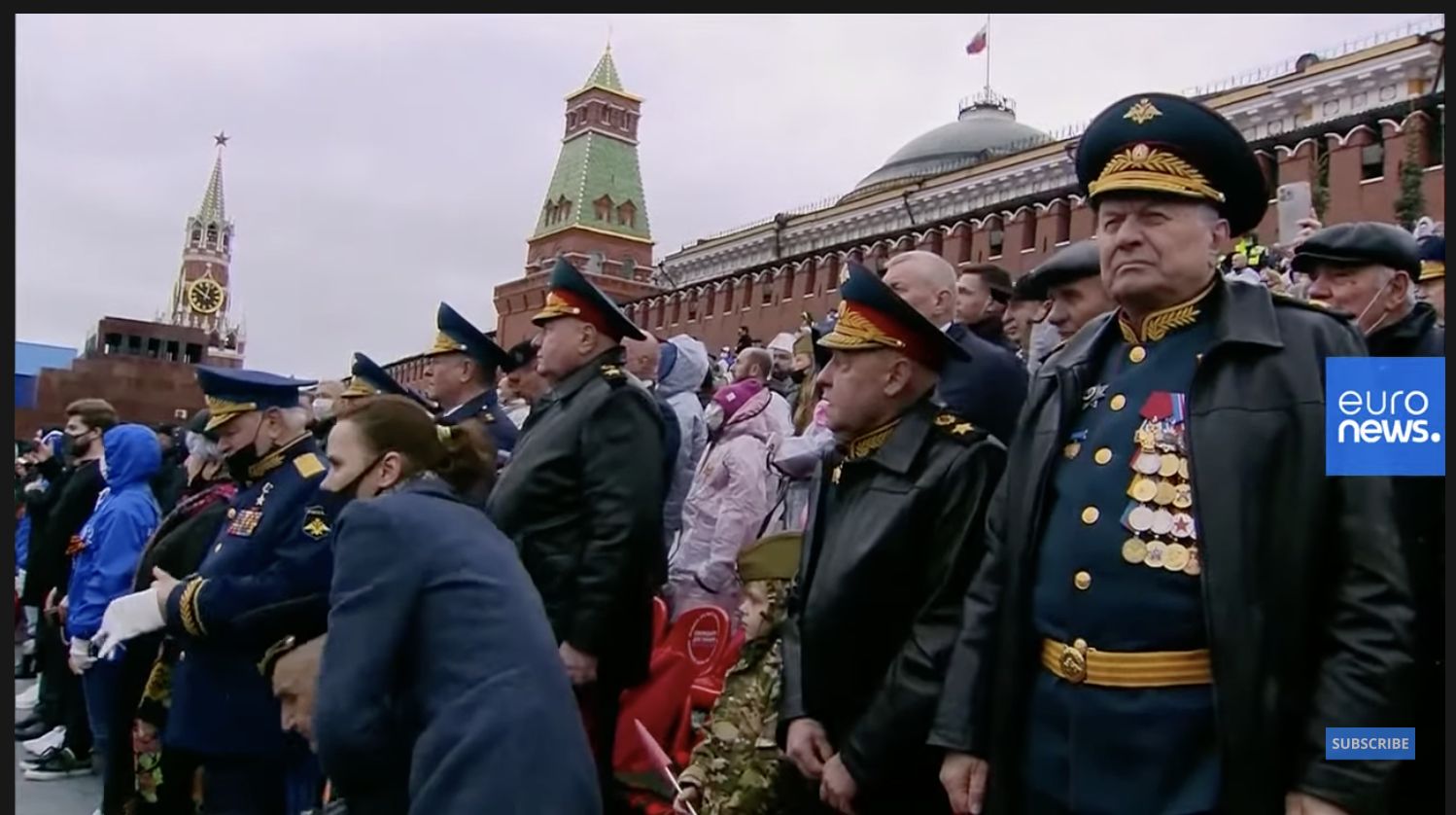
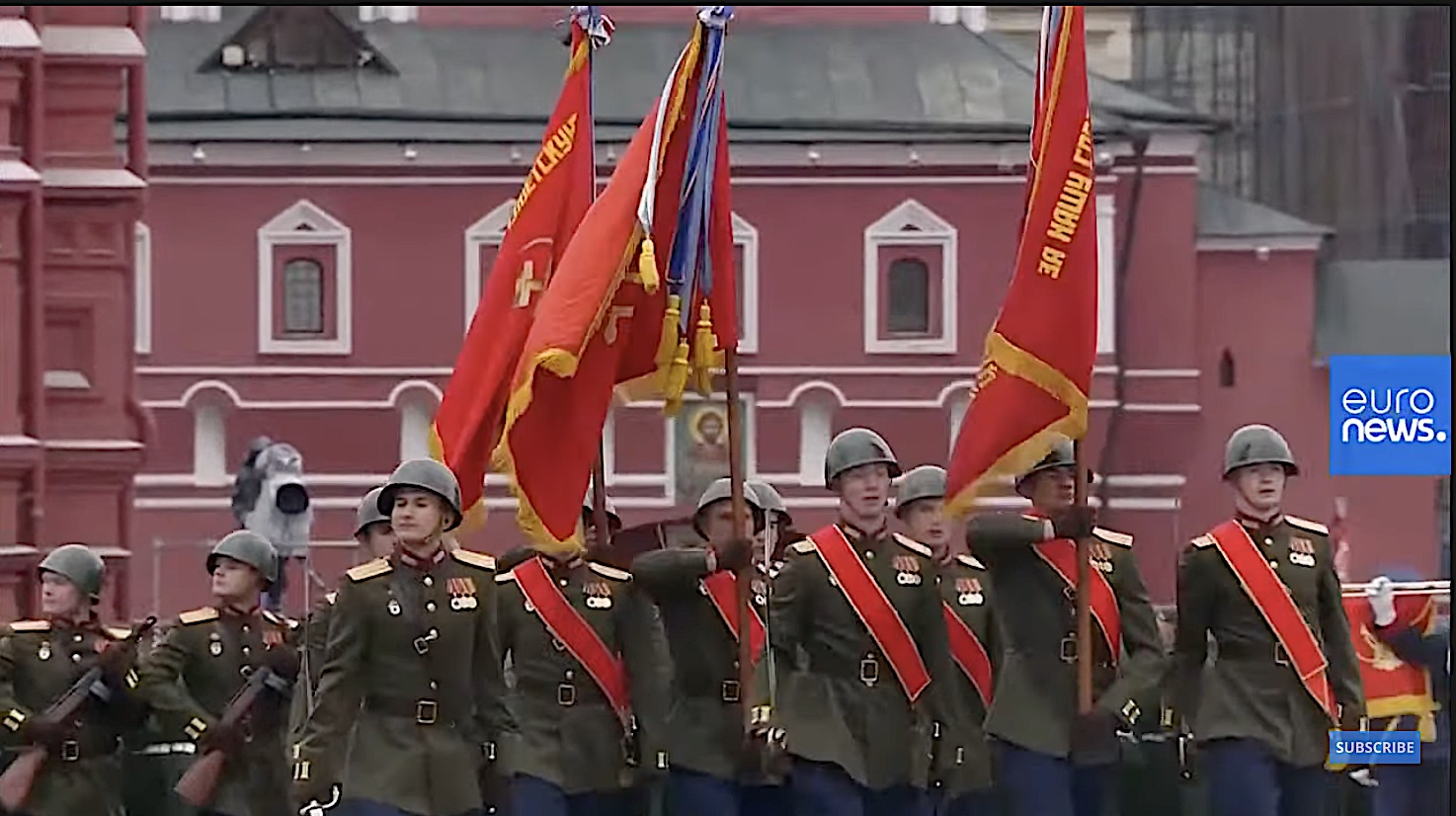
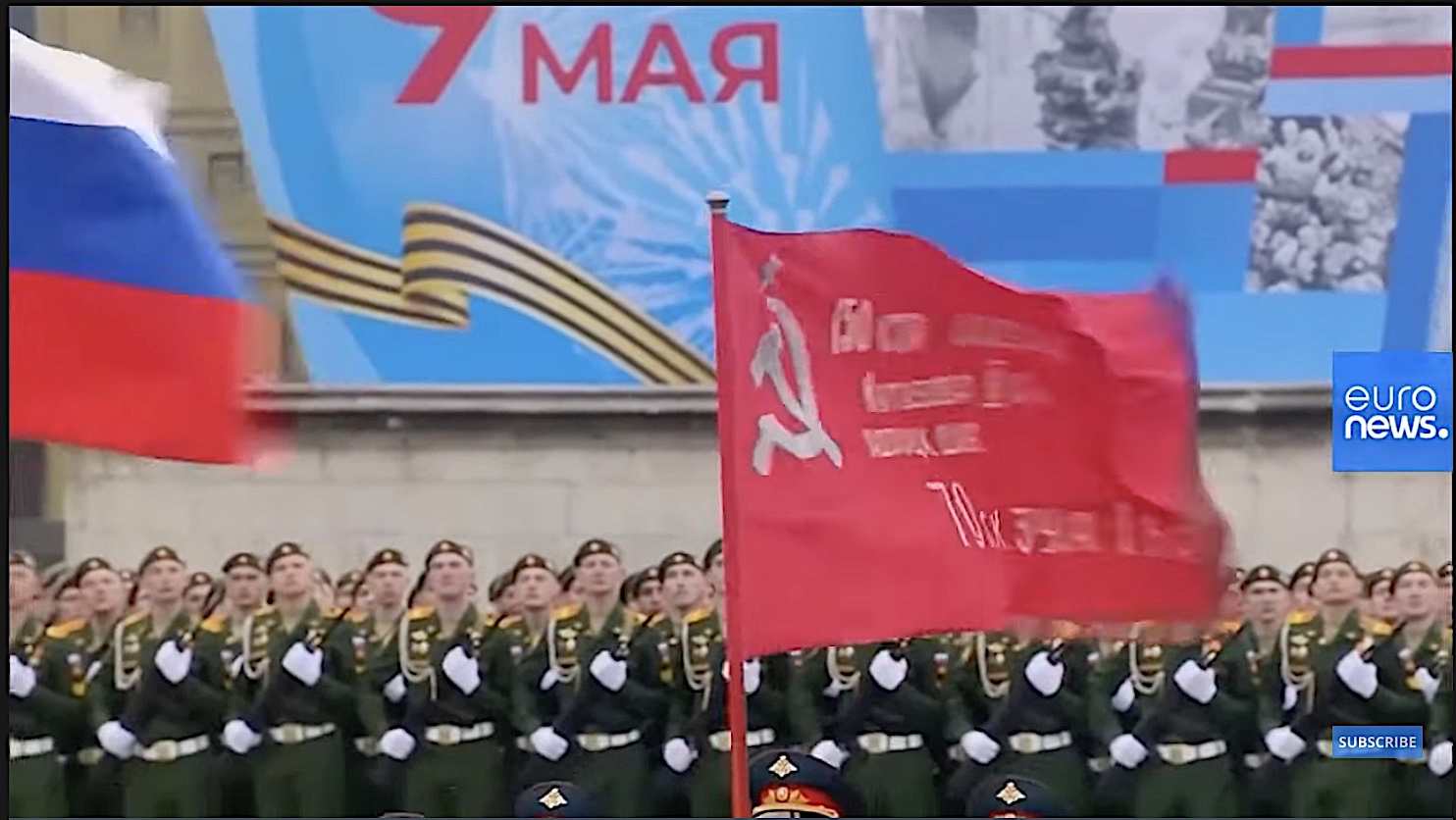

Thank you for a wonderful article. We in the US-dominated “West” get no real idea of the intricacies you explain. The USA keeps pretending it won WW2 and should therefore dominate the world for ever!!